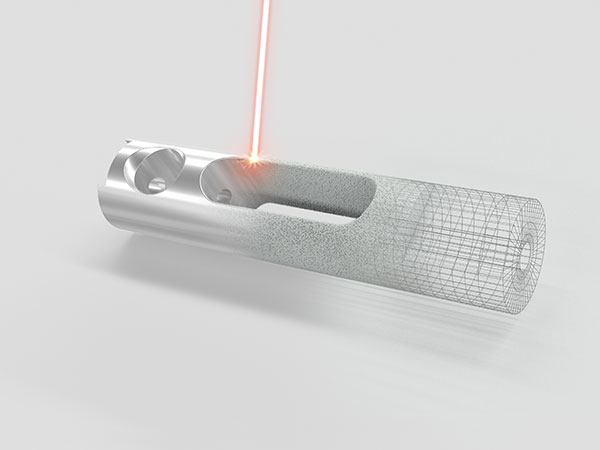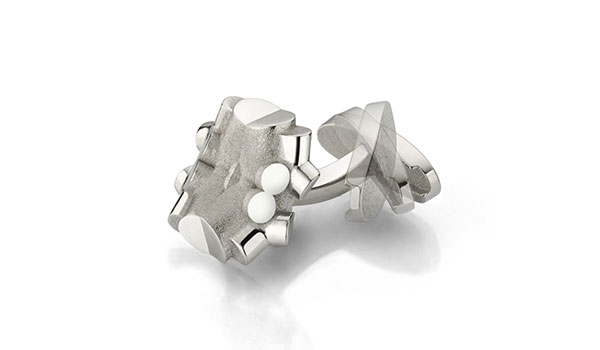Technologies
Additive manufacturing
We offer additive manufacturing of components and assemblies from precious metal powders of gold, silver, platinum and palladium alloys for different markets and applications. Having excellent powder expertise and the best machine equipment guarantees a system competence that allows your components to be manufactured to the highest quality. Thanks to stable and safe processes, we reach high construction rates in industrial production. The high recycling rate of the powder makes it highly cost-effective and makes additive manufacturing a particularly sustainable technology.
Benefits
Precision, economic advantages and material perfection make additive manufacturing an alternative to traditional casting and machining processes.
New design freedom
New design freedom
Additive manufacturing (in contrast to the precision casting process) allows the most complex geometries to be implemented. Even cavities and multipart components can be produced directly during the additive manufacturing process.
Exceptional material properties
Exceptional material properties
Additive manufactured workpieces are characterised by their particularly high strength, hardness and an extremely fine microstructure, which leads to an extraordinary surface gloss of the polish and makes precious stones shine even more brilliantly!
Material efficiency
Material efficiency
High costs are avoided due to the fact that workpieces are printed close to the final shape and thanks to the high recycling rate of the powder – this means higher economic efficiency especially with precious metals.
Additive manufacturing: applications and innovation
Faster, lighter, more unique – attributes that describe the additive manufacturing of applications made of precious metals. For example, the market entry times in application development can be significantly shortened, expensive materials can be conserved, while simultaneously increasing comfort and offering almost limitless freedom of design.
Finishing additive manufactured blanks into high-precision watch parts on turning/milling centres means a minimum volume to be machined and therefore a very short machining time, low tool wear as well as a minimum amount of chips and scraps to be reprocessed. The process chain ultimately results in a very low material input, and thus recycling costs.
Best material properties for coloured gold
Different configurations of the metal 3D printers enable optimal process conditions for highest quality. Whereas alloys with a high gold and copper content were previously difficult to process with the usual red lasers, as a result of their high reflectivity, the “green edition” of Trumpf’s Truprint technology offers the best suitability for all precious metal alloys. The resulting microstructures are extremely dense, very consistent and significantly finer compared to cast articles. This increases the hardness, improves resistance to wear and tear and brings an absolutely flawless shine when polished.
Platinum and platinum alloy components
In particular, additive manufacturing shows its worth over conventional casting processes when processing platinum group metals. Components made of platinum group metals are used in a wide variety of applications:
- In medical technology – for electrodes to deliver current to surrounding tissue among other things
- In flow measurement technology, if media to be measured have a high level of chemical aggressiveness
- In the jewellery and watch industry for luxury goods with special strength and superior hardness of up to 320 HV
- For various material pairings of an assembly, taking into account the coefficient of thermal expansion
New geometries
Additive manufacturing enables unconventional designs beyond the limits imposed by other manufacturing methods, such as casting. A perfect example of conserving materials and reducing weight is the production of a hollow ring in yellow gold or a link bracelet in 950 platinum for luxury watches. Compared to solid bracelet links, 40% of the material could be conserved, which also resulted in a more comfortable watch to wear.
Implemented function
Even functional features where assemblies would normally be required, such as the clasp mechanism on cufflinks, can be integrated directly. The stud, bar, hinge and clasp are manufactured as a single complete part in one step, so there is no need to assemble the individual parts.





